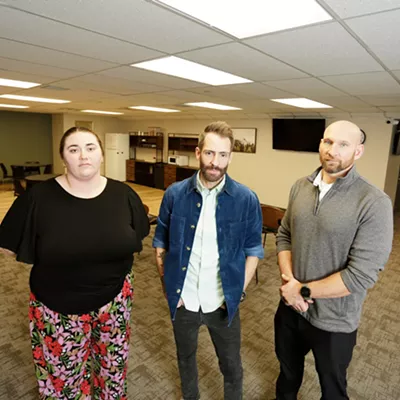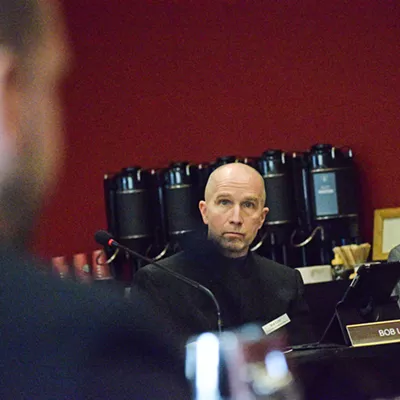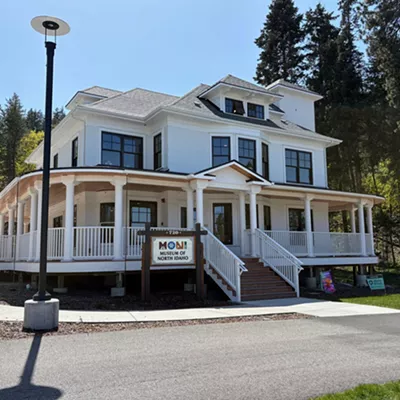
Sherry Miller has 11 grandchildren and has worked in Head Start programs. So she knew from her young granddaughter's "anger button" and speech delay that she wasn't developing normally.
Two years ago, Miller had her then-2-year-old granddaughter (who had come live with her in Kalispell, Montana) screened for lead exposure. The results revealed that the lead in the old house in Spokane where she used to live had poisoned her.
"This is something she's going to carry for the rest of her life," says Miller. "I think had they screened her in Washington, they'd have found it and done something about it."
Under federal law, Washington is supposed to screen children on Medicaid, like Miller's granddaughter, for exposure to lead, a toxic element that can have lasting effects on kids' IQ and academic achievement levels. But Washington has long been out of compliance with federal requirements to universally screen children receiving Medicaid at 12 and 24 months of age. According to numbers from the Washington State Health Care Authority, fewer than 5 percent of children age 6 years and younger who are on Medicaid have been screened.
Washington also lags behind the rest of the country in testing in general. According to data from the Centers for Disease Control and Prevention, only 3 percent of the state's children under age 6 had been tested for exposure to lead in 2012. Nationally, 10 percent of kids are tested.
"It's grossly inadequate," says Steven Gilbert, affiliate professor of environmental and occupational health sciences at the University of Washington. The state, he says, has "one of the country's worst compliance rates" when it comes to Medicaid screening requirements.
Washington health agencies have argued that research shows lead exposure is becoming less common in the state. They're focusing on risk reduction while allowing Medicaid health-care providers to use targeted screenings for children living in older housing (more likely to contain lead paint) or who have friends or family who have been exposed.
Proponents of universal screening scored a court victory last year that could change how the state's most vulnerable children are tested for lead. But now, the state is seeking an exemption from universal testing requirements, and the outcome hinges on a decision from the federal government.
The unfolding public health crisis in Flint, Michigan, has brought national attention to the dangers of lead poisoning. Here in Washington, proponents of more screening say that the state doesn't know for sure how big of a problem lead exposure is. If the state does come into compliance, they say it could reveal ongoing problems.
"[Washington has] a lot of catching up to do," says Wayne Turner, a staff attorney at the National Health Law Program, of the state's lack of screening. "We either do this now or we do this later, because the effects of lead last for a lifetime."
Once widely used in paint, gasoline and other applications, lead was recognized decades ago as a toxic element that has lasting health impacts for those exposed to it. Although it has been removed from many consumer products, lead can still be found in houses built before 1978 (the year it was banned from paint), as well as pipes used to deliver water and soil contaminated by smelters. It's also in some imported toys, pots and spices.
A report issued last year by the state Department of Health cited numbers showing that although Washington screened fewer kids than the rest of the country, they were less likely to have elevated lead blood levels. The report argues that it makes more sense to screen low-income children who are at greater risk and that preventing exposure "is the only practical approach to preventing elevated blood lead levels in children."
Nationally, Turner says it's been a "mixed bag" when it comes to universal screening requirements for children on Medicaid.
"I think that lead is one of these issues where something bad happens and it's in the headlines, and then it goes off the radar," he says. "Which is why we want these mandatory testing requirements, so we can get an early warning in place."
Idaho similarly balked at federal requirements, prompting a class action lawsuit in 2000 that was brought against the state. The suit resulted in a judgment in 2003 that required Idaho to begin universal testing.
In 2015, environmental lawyer David Bricklin filed a similar suit on behalf of Virla Spencer, a Spokane woman whose five children qualify for Medicaid services, against Gov. Jay Inslee and the Washington State Health Care Authority. Although state officials settled the lawsuit, they've applied for a waiver from the federal Centers for Medicare & Medicaid Services that would allow Washington to join three other states which use targeted screenings over universal screenings.
"It's not easy to come up with a scheme that isolates which Medicaid kids are more at risk than others," says Bricklin. "The lead exposure pathways are diverse."
Cheryl Moore, spokeswoman for the WSHCA, says that it's ultimately up to Medicaid health care providers to determine which children they test. However, she noted that the WSHCA anticipates more providers to conduct the screenings in response to a new guide that clarifies they are expected to do so.
Alexander Garrard, clinical managing director of the Washington Poison Center, says that unlike other states, water is unlikely to be a source of exposure in Washington. "Universally, the most common source is going to be from houses," he says.
A map created by the state Department of Health shows that much of Spokane is at the highest level of risk for lead exposure, based on the age of housing and poverty levels. (A statement from the department notes that the tool doesn't determine the risk of individual houses.)
Bricklin says that if Washington is required to undergo universal screening, it could take years to get health care providers up to speed. By then, if testing does reveal that low-income families are living in housing contaminated with lead paint, they still might not have the means to fix it or move, he says.
Sherry Miller, for one, says her granddaughter is doing better. After the diagnosis, she started giving her vitamins and sneaking detoxifying leafy vegetables into smoothies, which seemed to help. But Miller says her granddaughter still has a speech delay and behavioral problems, and is working on her motor skills.
All of this, says Miller, might have been avoided with a simple test.
"To have not found that high of a level of lead in that baby's blood is unforgivable," she says. ♦






















